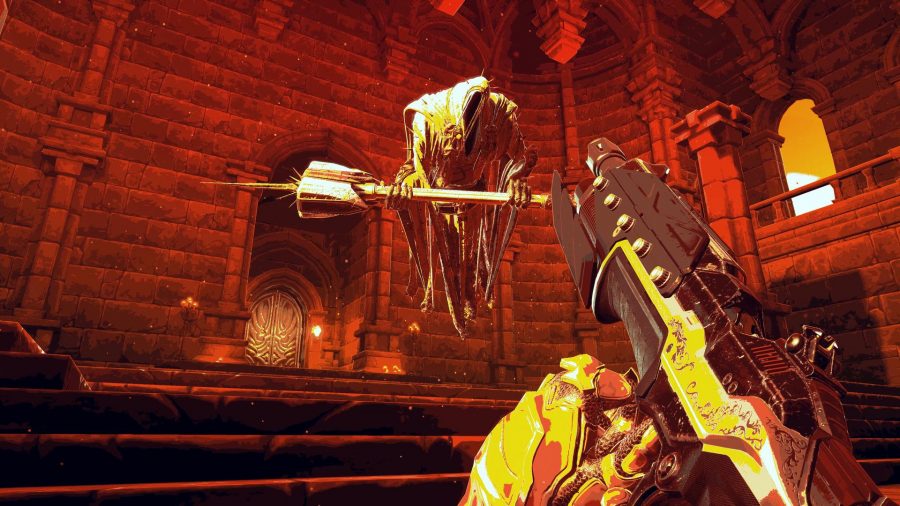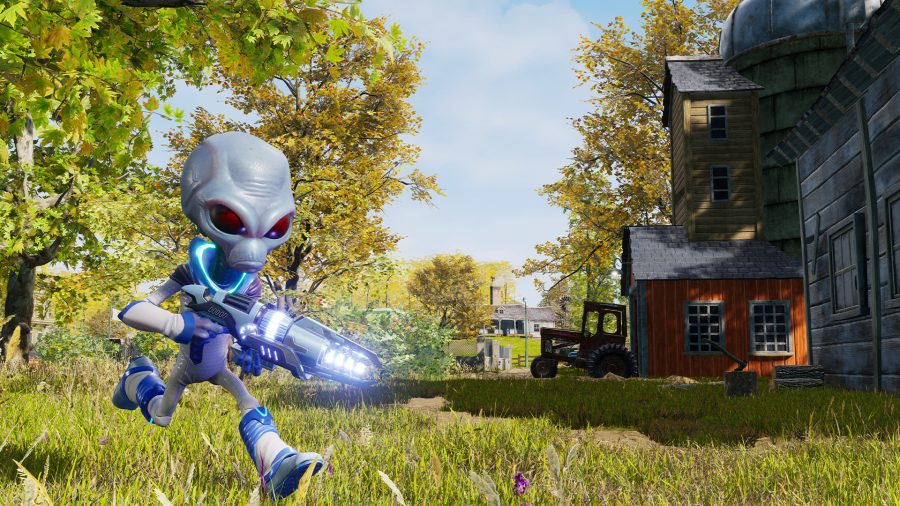In case you’ve somehow managed to miss it, every week we chat with game developers about how they’re utilising Unreal Engine 4 to realise their visions. With 52 weeks in a year, that’s a lot of development stories to tell, and yet every week we learn of some inventive new way a developer is using UE4’s features, whether the end goal is to create realistic wave physics, squash bugs, or streamline production.
2020 has provided us with some incredible games made in Unreal Engine 4, covering a typically exhaustive range of genres, budgets, and experience levels that shows just how versatile Epic’s tech is. We did the same back in 2018 and 2019, in case you want to delve deeper into the archives, and of course you can always thumb through the Making it in Unreal backlog.
So join us as we recount the very best Making it in Unreal interviews from 2020, including everything from rhythmic FPS games and serfdom simulators, to cult classic remasters and strategic twists on triple-A titans.
BPM: Bullets Per Minute
Doom with rhythm mechanics is a hell of an elevator pitch, so naturally we’ve had our eyes on BPM: Bullets Per Minute ever since we laid eyes on its gameplay trailer. At first glance it’s a retro FPS with a metal soundtrack, but there’s a Guitar Hero-like mechanic for syncing your every shot and weapon reload up to the music, granting buffs as you improve your timing. Making that mechanic feel natural in a genre that teaches you to fire on impulse is no mean feat, so it’s handy the team had “a powerhouse of an engine,” backing them up.
Unreal Engine 5
This feels like a bit of a cheat entry as it’s not about a game being made in Unreal, it’s about making Unreal Engine itself, or UE5 to be more precise. As you might expect, Epic’s upcoming engine boasts plenty of new tech, so we caught up with vice president of engineering, Nick Penwarden, to find out more about Lumen, Nanite, and some of the other advances that will be available for developers to preview in 2021.
Gears Tactics
Unreal Engine and Gears of War are a peanut butter and jelly tier combination. The Gears series has stuck with Epic’s engine ever since the original Gears of War released way back in 2006. Despite its top-down strategic twist, Gears Tactics doesn’t deviate from this legacy, but can creating a turn-based tactics game from Gears 5 really be as simple as pulling the camera up? In a word, no.
Disintegration
Sci-fi shooter Disintegration didn’t start life out on Unreal Engine, but once studio V1 Interactive made the move the benefits became clear. We’re used to hearing about key UE4 features like Blueprints Visual Scripting, but co-creator and technical director Joe Arroyo points to the engine’s visual logger as its handiest feature, describing it as a “Christmas morning” moment for the studio.
Destroy All Humans
It’s taken 15 years for this cult classic anti-human annihilation simulator to get the plaudits it deserves, heaping plenty of pressure on studio Black Forest Games to deliver the perfect remake. With a series of fully destructible sandbox levels to recreate, Unreal Engine 4’s built-in physics tools were crucial in creating environments that react realistically to the player’s many, many weapons of mass destruction.
The Walking Dead Onslaught
There’s a lot of work that goes into making melee combat feel as impactful as it does in The Walking Dead Onslaught. Being in VR, it’s even trickier to make players feel like they’re plunging a screwdriver through a Walker’s eye socket when, in reality, they’re waving a lightweight controller through the air. It’s all about getting the impact just right, and Unreal Engine 4’s animation blueprint system lets The Walking Dead Onslaught’s artists scrub in-game scenes to ensure the contact frames in every animation are spot on.
Medieval Dynasty
Medieval Dynasty aims to be a medieval life simulator, plonking players in the stinking, muddy boots of a penniless young man in dark ages Europe. Your goal? Survive by establishing a humble shelter and foraging for food and supplies. Eventually, however, you can establish your own village and found a dynasty. It is, like so many Steam games with ‘simulator’ in their titles, and Early Access project, and that comes with plenty of its own development hurdles that Unreal Engine 4 comes in handy for.
Little Hope
The second instalment of Supermassive Games’ The Dark Pictures Anthology dumps four college students and their teacher in the isolated and abandoned town of Little Hope. What could possibly go wrong? With both online play and a branching narrative, quite a lot, actually. Thankfully, Unreal Engine 4 is a flexible platform, which allows Supermassive Games to devise their own solutions that “seamlessly blend with the rest of the engine”.
In this sponsored series, we’re looking at how game developers are taking advantage of Unreal Engine 4 to create a new generation of PC games. With thanks to Epic Games and all of the developers we spoke to in 2020.









